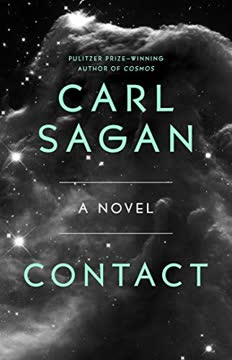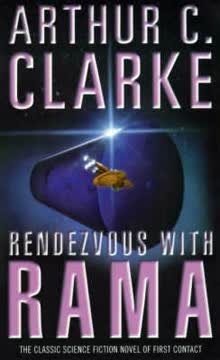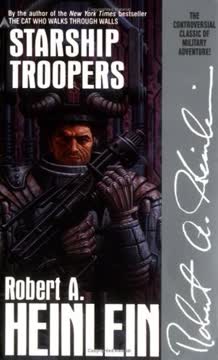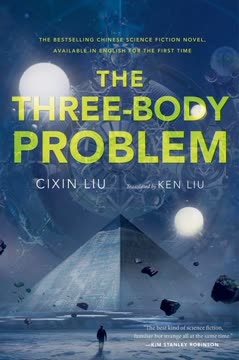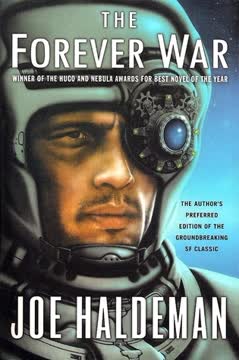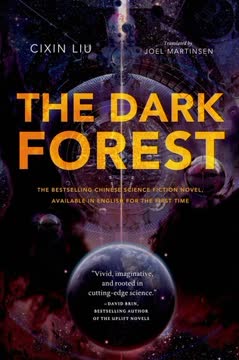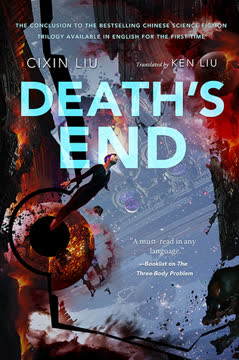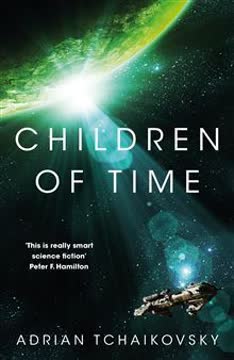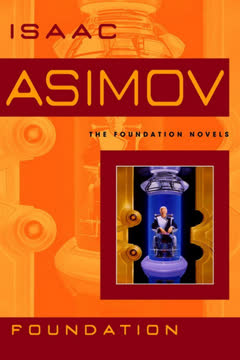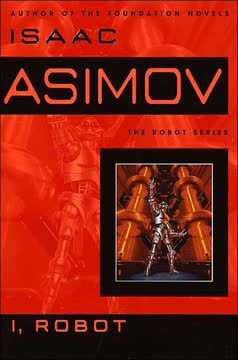Plot Summary
Childhood Under the Stars
Eleanor "Ellie" Arroway's earliest memories are filled with wonder and questions. Raised by loving parents, she is captivated by the night sky, the workings of radios, and the mysteries of mathematics. Her father encourages her curiosity, teaching her to ask questions and seek understanding, while her mother is more reserved, hoping for a conventional life for her daughter. When Ellie's father dies suddenly, her world is shaken, and she is left with a deep sense of loss and a hunger for meaning. This formative grief, combined with her insatiable curiosity, sets her on a lifelong quest to understand the universe and her place within it.
Questions and Loss
Ellie's father's death leaves a void that her mother and new stepfather, John Staughton, cannot fill. Staughton is dismissive of Ellie's scientific interests, reinforcing her sense of isolation. Ellie finds solace in books, mathematics, and the stars, developing a skeptical, questioning mind. She is drawn to the mysteries of transcendental numbers and the vastness of the cosmos, feeling both insignificant and exhilarated. Her early experiences with loss and exclusion fuel her determination to prove herself, to seek answers where others accept dogma, and to find connection in a universe that often feels indifferent.
The Search Begins
Ellie excels academically, earning scholarships and pursuing physics and engineering at Harvard and Caltech. She faces sexism and skepticism, often being the only woman in the room. Mentored by the brilliant but egotistical David Drumlin and the gentle, imaginative Peter Valerian, she is introduced to radio astronomy and the search for extraterrestrial intelligence (SETI). The idea that humanity might not be alone in the universe becomes her driving passion. She develops new technologies for detecting faint signals, determined to listen for a message from the stars, even as colleagues and superiors doubt the value of her quest.
Patterns in the Noise
Directing Project Argus, a massive array of radio telescopes in New Mexico, Ellie leads a team searching for artificial signals amid the cosmic static. Years pass with only false alarms and skepticism from the scientific community. The project is threatened with defunding, and Ellie faces personal and professional isolation. Yet she persists, haunted by the possibility that a message could be hidden in the noise, waiting for someone patient and open-minded enough to find it. Her dreams and memories intertwine with her work, as she listens for a pattern that could change everything.
The Message from Vega
One night, Argus detects a powerful, structured signal from the direction of Vega, a nearby star. The signal consists of a sequence of prime numbers—an unmistakable sign of intelligence. The world is electrified by the discovery, and Ellie is thrust into the global spotlight. Scientists, politicians, and religious leaders converge on Argus, each with their own hopes and fears. The message is soon found to contain layers of information, including a video of the 1936 Berlin Olympics—Earth's first television broadcast strong enough to escape the atmosphere—sent back as a cosmic "we hear you." The implications are profound and unsettling.
Decoding the Unknown
Beneath the surface of the signal, scientists discover a complex, repeating message encoded in polarization and phase. The message is a palimpsest: prime numbers, the Olympic broadcast, and, hidden deeper, a vast technical blueprint. As international teams collaborate and compete, the message is slowly decrypted. It is a set of instructions for building a machine of unknown purpose, written in a universal scientific language. The world is gripped by debate: Is this a gift, a test, or a trap? Ellie and her colleagues struggle with the enormity of the task and the responsibility it brings.
World in Turmoil
The revelation of the message triggers a global crisis. Nations vie for control, religious leaders denounce or embrace the discovery, and the public is swept by hope, fear, and millennial fervor. Old rivalries and new alliances emerge as the world grapples with the possibility of contact with a vastly superior intelligence. Ellie becomes a symbol of both scientific progress and existential anxiety. Amidst political intrigue, sabotage, and fanaticism, the project to build the Machine moves forward, driven by a fragile consensus and the shared dream of reaching beyond Earth.
The Machine Blueprint
The Machine's design is unlike anything on Earth, requiring new materials, technologies, and industries. Factories rise in Wyoming, Uzbekistan, and Japan, as nations pool resources and expertise. The Machine is a dodecahedral structure surrounded by spinning shells, with five seats at its core. Its purpose remains a mystery, but the instructions are precise and redundant, as if written for beginners. The process of building the Machine unites and divides humanity, testing the limits of cooperation and trust. Sabotage and tragedy strike, but the project endures, driven by the hope of transcending human limitations.
Building Across Borders
After years of work, five individuals are selected to crew the Machine: Ellie Arroway (USA), Vasily Lunacharsky (USSR), Devi Sukhavati (India), Xi Qiaomu (China), and Abonnema Eda (Nigeria). Each brings unique expertise and perspective, representing the diversity and aspirations of humanity. As the Machine nears completion in Japan, the crew prepares for a journey into the unknown. They are briefed, celebrated, and scrutinized, but the true nature of their mission remains elusive. The world watches as the Five step into the Machine, carrying the hopes and fears of an entire species.
The Five Chosen
The Machine is activated, and the Five are plunged into a series of tunnels—wormholes or black holes—connecting distant points in the galaxy. They experience a sequence of astronomical wonders: the rings of Vega, binary stars, the galactic center. Each "station" is a marvel, but also a reminder of their own smallness. The journey is both physical and psychological, challenging their understanding of reality and their place in the cosmos. The tunnels are not just passages through space, but through the boundaries of knowledge and imagination.
Through the Tunnels
The Five emerge at a vast structure near the center of the Milky Way—a "Grand Central Station" for interstellar travelers. They dock at a port shaped to fit their Machine, surrounded by thousands of other ports for beings of every conceivable form. The scale and diversity of the Station are overwhelming, a testament to a galaxy teeming with life and intelligence. The Five are separated, each entering a personal encounter designed to communicate across the deepest divides of biology and culture. For Ellie, it is a reunion with her long-lost father, recreated from her memories.
Grand Central Galaxy
Ellie's encounter is both comforting and disorienting. The being, appearing as her father, explains that the galaxy is overseen by "Caretakers," themselves the inheritors of an even older, vanished civilization. The tunnels and stations were not built by the current galactic community, but by unknown predecessors. The Caretakers monitor emerging civilizations, offering limited help but respecting autonomy. The true test is not technological, but moral and emotional: the capacity for love, kindness, and wonder. Ellie learns that humanity is not alone, but also not central; the universe is vast, ancient, and filled with mysteries beyond comprehension.
The Test and the Beach
On a simulated Earth beach, Ellie confronts her deepest longings and fears. The Caretaker, in her father's form, reveals that the journey was as much about self-discovery as about contact. The universe is "cultivated," shaped by intelligences working on scales of time and space beyond human reckoning. Yet even the Caretakers are not the ultimate creators; they, too, seek meaning and messages hidden in the fabric of reality. Ellie is told of a message encoded deep within the digits of pi—a signature of the universe's true artist. The encounter is brief, poignant, and leaves her changed.
Return and Doubt
The Five return to Earth, but only twenty minutes have passed. Their instruments are blank, and there is no physical evidence of their journey. Authorities, led by Michael Kitz, suspect a hoax or delusion. The Machine is declared a failure, and the crew is silenced under threat of public disgrace. Ellie and her companions are left to grapple with the reality of their experience, isolated by official skepticism and public indifference. Yet each is transformed, carrying a secret knowledge that cannot be erased.
The Circle in Pi
Back at Argus, Ellie devotes herself to searching for the message hinted at by the Caretaker. Using powerful computers, she probes the digits of pi, seeking patterns that cannot be explained by chance. At last, she finds a simple, perfect circle encoded deep within the number—a universal symbol, a signature left by the creator of the cosmos. The discovery is both humbling and exhilarating, a reminder that meaning can be found in the most fundamental structures of reality. Ellie realizes that the search for contact is not just outward, but inward, into the heart of existence.
Love and the Cosmos
Ellie's journey ends where it began: with questions, loss, and the search for connection. She reconciles with her past, forgives her parents, and finds solace in the knowledge that love—human and cosmic—is the thread that binds the universe. The message in pi, the encounter at the galactic center, and the struggles on Earth all point to a deeper truth: that the universe is not indifferent, but marked by purpose and beauty. For small creatures such as we, the vastness is bearable only through love.
Characters
Eleanor "Ellie" Arroway
Ellie is the protagonist, a brilliant and fiercely independent scientist shaped by early loss and a relentless curiosity. Her relationship with her father, and later her stepfather, instills both a hunger for understanding and a sense of alienation. Ellie's journey is one of both scientific discovery and personal healing. She faces sexism, skepticism, and isolation, but persists in her quest to find meaning in the universe. Her psychological arc moves from grief and doubt to acceptance and wonder, culminating in a transformative encounter that reconciles her scientific skepticism with a profound sense of awe and love.
David Drumlin
Drumlin is Ellie's early mentor and later rival, a renowned scientist whose brilliance is matched by his competitiveness and insecurity. Initially dismissive of SETI, he becomes a key figure in the project as the message from Vega is discovered. Drumlin's arc is one of gradual openness to the unknown, though he remains pragmatic and self-interested. His ultimate act—sacrificing himself to save Ellie during the Machine sabotage—reveals a depth of character and a capacity for selflessness that transcends his earlier pettiness.
Peter Valerian
Valerian is a radio astronomer and one of Ellie's most supportive colleagues. He is fascinated by the possibility of extraterrestrial intelligence, balancing scientific rigor with imaginative speculation. Valerian's humility and steadiness provide a counterpoint to Drumlin's ego and Ellie's intensity. He represents the ideal of science as a collaborative, open-minded pursuit, and his quiet faith in both reason and wonder helps sustain the project through its darkest moments.
Vasily "Vaygay" Lunacharsky
Lunacharsky is a senior Soviet scientist, both a rival and a friend to Ellie. He is pragmatic, politically savvy, and deeply human, with a sardonic sense of humor and a history of navigating the complexities of Soviet bureaucracy. Vaygay's personal life is marked by regret and longing, but he finds purpose in the Machine project and in his friendship with Ellie. His perspective bridges East and West, science and politics, and his ultimate fate is shaped by both personal sacrifice and a commitment to the greater good.
Devi Sukhavati
Devi is an Indian molecular biologist and physician, chosen as one of the Five for her expertise and her ability to bridge cultures. Her personal history is marked by love and loss, and she brings a deep empathy to the crew. Devi's spirituality and scientific acumen coexist, allowing her to navigate the challenges of the journey with grace. Her encounter at the galactic center forces her to confront the meaning of love, sacrifice, and the limits of memory.
Xi Qiaomu
Xi is a Chinese scientist and former revolutionary, shaped by the upheavals of twentieth-century China. His life is a testament to endurance and adaptability, and he brings a historical perspective to the Machine project. Xi's fascination with history, archaeology, and the unification of diverse peoples informs his approach to the journey. His encounter at the Station is both personal and symbolic, reflecting the longing for continuity and the pain of loss.
Abonnema Eda
Eda is a Nigerian physicist, renowned for his work on superunification. He is modest, contemplative, and deeply committed to the advancement of science in the developing world. Eda's presence on the crew challenges stereotypes and expands the project's scope. His insights into the nature of the tunnels and the physics of the journey are crucial, and his personal encounter at the Station is marked by humility and a sense of responsibility to future generations.
Michael Kitz
Kitz is a high-ranking U.S. government official, responsible for national security and the Machine project. He is pragmatic, risk-averse, and deeply suspicious of anything that threatens the status quo. Kitz's skepticism leads him to challenge the Five's account of their journey, framing it as a possible hoax or delusion. His actions reflect the anxieties of a world facing the unknown, and his arc is one of resistance to change, tempered by a grudging respect for the courage of the explorers.
Kenneth der Heer
Der Heer is the President's Science Adviser, a molecular biologist who becomes both a professional ally and a romantic partner to Ellie. He is skilled at navigating the intersection of science and politics, often serving as a mediator between competing interests. Der Heer's relationship with Ellie is marked by mutual respect, affection, and the challenges of balancing personal and professional commitments. His support is crucial to the project's survival, and his own journey is one of learning to trust in both reason and emotion.
S. R. Hadden
Hadden is a reclusive, visionary industrialist whose inventions and resources are instrumental in building the Machine. He is both a benefactor and a provocateur, challenging authority and conventional wisdom. Hadden's motivations are complex—part ego, part genuine curiosity—and his actions often blur the line between self-interest and altruism. His ultimate fate—launching himself into interstellar space in pursuit of immortality—serves as a commentary on ambition, mortality, and the human desire to transcend limits.
Plot Devices
The Palimpsest Message
The central plot device is the discovery and decryption of a multi-layered message from Vega. The message is a palimpsest: prime numbers to attract attention, a video echo of Earth's own broadcast, and, hidden deeper, a technical blueprint for a machine. Each layer requires new methods of analysis—polarization, phase modulation, mathematical reasoning—mirroring the process of scientific discovery itself. The message's structure foreshadows the journey's challenges: the need to look beyond the obvious, to question assumptions, and to collaborate across boundaries. The palimpsest also serves as a metaphor for the layers of meaning in human experience and the universe.
The Machine and the Journey
The Machine is both a literal device and a narrative engine, propelling the Five into a series of wormhole "tunnels" that connect distant parts of the galaxy. The journey is structured as a sequence of "stations," each offering astronomical wonders and existential questions. The tunnels themselves are a plot device that allows for rapid movement across space and time, but also serve as a metaphor for the passage through uncertainty, fear, and transformation. The journey's ambiguity—was it real, a test, or a delusion?—creates narrative tension and invites reflection on the nature of evidence, belief, and meaning.
The Test and the Beach
At the heart of the story is the encounter at the galactic center, where each traveler faces a personal "test" in a simulated environment. For Ellie, this is a reunion with her father; for others, it is a meeting with lost loved ones or historical figures. The test is not of knowledge or technology, but of character, love, and humility. The use of familiar forms by the Caretakers is both a narrative device to bridge the gap between species and a commentary on the limits of perception. The ambiguity of the test—its purpose, its outcome—reflects the story's central themes of uncertainty and the search for meaning.
The Circle in Pi
The discovery of a message encoded deep within the digits of pi is a powerful plot device, uniting science, philosophy, and spirituality. It serves as both a literal clue—a signature left by the universe's creator—and a metaphor for the search for order and meaning in chaos. The circle, a universal symbol, links the personal and the cosmic, the finite and the infinite. The use of mathematics as a bridge between species and as evidence of purpose in the universe is both a narrative resolution and an invitation to continued inquiry.
Narrative Structure and Foreshadowing
The novel's structure mirrors the scientific process: observation, hypothesis, testing, and revision. Early chapters foreshadow later revelations, as Ellie's childhood questions about loss, meaning, and the stars are echoed in the cosmic journey. The recurring motifs of circles, tunnels, and palimpsests reinforce the themes of recursion, hidden meaning, and the interconnectedness of all things. The narrative's ambiguity—was the journey real, a delusion, or something in between?—is sustained by the lack of physical evidence, challenging both characters and readers to grapple with the limits of knowledge and the nature of belief.
Analysis
Carl Sagan's Contact is a profound meditation on the intersection of science, faith, and the human longing for connection. Through the journey of Ellie Arroway—from a lonely, questioning child to a scientist who glimpses the vastness and purpose of the cosmos—the novel explores the limits of knowledge, the necessity of skepticism, and the enduring power of love. The discovery of the message from Vega and the construction of the Machine serve as catalysts for both global upheaval and personal transformation, forcing humanity to confront its fears, hopes, and prejudices. The ambiguity of the Five's journey—real or imagined, test or revelation—mirrors the ambiguity at the heart of existence: the tension between evidence and belief, reason and wonder. The message hidden in pi, a circle within a circle, is both a scientific and spiritual epiphany, suggesting that the universe is not indifferent, but marked by intention and beauty. Ultimately, Contact argues that the search for meaning is both outward and inward, and that for "small creatures such as we, the vastness is bearable only through love." The novel invites readers to embrace uncertainty, to seek connection, and to find awe in the mysteries that surround us.
Last updated:
Review Summary
Contact receives high praise for its intellectual exploration of first contact with aliens, blending science, philosophy, and theology. Readers appreciate Sagan's optimistic vision, realistic scientific approach, and thought-provoking discussions on faith and reason. The protagonist, Ellie Arroway, is lauded as a strong female character. While some find the pacing slow and characterization lacking, most consider it a captivating and enlightening read. The novel's ending and message differ significantly from the film adaptation, with many preferring the book's more scientifically grounded conclusion.
